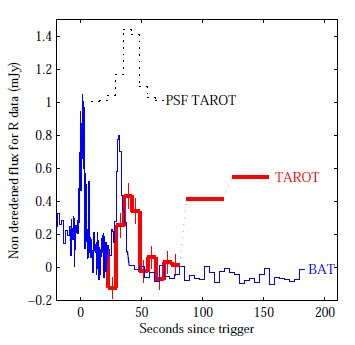Klotz 2009 GRB 081126的光学和伽玛辐射
· Find Similar Abstracts (with default settings below) - · arXiv e-print (arXiv:0904.4786)
- · References in the Article
- ·
- · Translate This Page
| Title: | Correlated optical and gamma emissions from GRB 081126 | |
| Authors: | Klotz, Alain; Gendre, B.; Atteia, J. L.; Boër, Michel; Coward, David M.; Imerito, Alan C. | |
| Publication: | eprint arXiv:0904.4786 | |
| Publication Date: | 04/2009 | |
| Origin: | ARXIV | |
| Keywords: | Astrophysics - Cosmology and Extragalactic Astrophysics | |
| Comment: | 4 pages, to be published in ApJ; Astrophysical Journal Letters 697 (2009) L18 | |
| Bibliographic Code: | 2009arXiv0904.4786K |
Abstract
We present an analysis of time-resolved optical emissions observed from the gamma-ray burst GRB 081126 during the prompt phase. The analysis employed time-resolved photometry using optical data obtained by the TAROT telescope, using BAT data from the Swift spacecraft, and time-resolved spectroscopy at high energies from the GBM instrument onboard the Fermi spacecraft. The optical emission of GRB 081126 is found to be compatible with the second gamma emission pulse shifted by a positive time lag of 8.4 $\pm$ 3.9 s. This is the first well-resolved observation of a time lag between optical and gamma emissions during a gamma-ray burst. Our observations could potentially provide new constraints on the fireball model for gamma-ray burst early emissions. Furthermore, observations of time lags between optical and gamma ray photons provides an exciting opportunity to constrain quantum gravity theories.Bibtex entry for this abstract Preferred format for this abstract (see Preferences)





.png)
.png)

